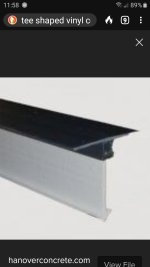As mentioned above, the more water added to the concrete when it's poured, the bigger the cracks are going to be. The reason some people like to cut the concrete after it has set up is to make the cracks look nicer, or be less noticeable. The concrete will crack where it's weakest, so the cut line becomes the place that it cracks first.
All concrete cracks is a true statement. But not all cracks are very big, or problematic. The bad cracks will happen in the first week. Rebar has to be in the middle area of the concrete so it will hold all the cracks together and keep them tight. Rebar on the ground does not accomplish this, or anything else. Welded wire is actually better then rebar at holding concrete together when it cracks, but it's 100% impossible to keep it off of the ground when pouring concrete. The exception is if it's tied on top of the rebar and it's held up in the air so well that guys can walk on it while spreading the concrete.
Concrete expands and contracts from warming up and cooling off. Concrete that is exposed to these temperature changes needs an expansion joint. This is not the same as cutting concrete. An expansion joint is most commonly done with a 1/4 board. Most driveways will have this. Each section is separate from the other, but usually connected with rebar. The wood creates a gap between the concrete and it absorbs the movement of the concrete. Sidewalks do this too, but usually it's over longer distances. Bridges and Highways also have expansion joints, which is why they make so much noise driving over them.
When a house is built, the slab for the heated and cooled areas are poured at one time. It is very rare for this area to have anything cut into it unless a person just wants to create a design in the concrete that looks similar to tile grout lines. I think it's a dust collector, but to each their own. After the living area is poured, the porches are poured. This could happen the next day, or a month later, or longer. The reason it's done separately is that the indoors area will not expand and contract. It generally remains at a constant temperature, which means it stays the same size. The outside areas will expand and contract. Garages are done both ways, with varying results. Some never have issues, others do. I believe it really depends on how hot or cold it gets inside the garage. If insulated, they are usually fine when poured at the same time as the house.
For your situation, the living area will be kept at a constant temperature and there is no need to cut anything into it. It might be worthwhile to cut the line where the shop and the live area wall will be, especially if you are installing tile. If you are installing carpet, then it really wont matter since you'll never know if it cracks or not. Same thing with any floating flooring. My workshop is 24x30 without any cuts to it, and you have to get on your hands and knees to find a crack in it. I haven't seen one since it was poured 15 years ago, but I'm sure that they are there.

